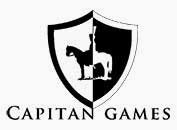 After his failure before the Lines of Torres Vedras, Masséna retired towards Spain, closely watched by Wellington, and in the first days of April 1811, the routed Army of Portugal crossed the Spanish-Portuguese border. However and after a short rest, Massena decided to start again the campaign in ordert to help the Almeida's garrison besieged by the British-Portuguese forces. After requiring the help of a reluctant Bessieres (commanding the French Army of the North) that arrived with only two small cavalry brigades, Massena concentrated again the Army of Portugal near Ciudad Rodrigo and crossed the Agueda the 2nd of May with 42,000 infantry, 4,500 cavalry and 38 guns.
After his failure before the Lines of Torres Vedras, Masséna retired towards Spain, closely watched by Wellington, and in the first days of April 1811, the routed Army of Portugal crossed the Spanish-Portuguese border. However and after a short rest, Massena decided to start again the campaign in ordert to help the Almeida's garrison besieged by the British-Portuguese forces. After requiring the help of a reluctant Bessieres (commanding the French Army of the North) that arrived with only two small cavalry brigades, Massena concentrated again the Army of Portugal near Ciudad Rodrigo and crossed the Agueda the 2nd of May with 42,000 infantry, 4,500 cavalry and 38 guns.
On the other side, Wellington was determined to prevent the relief of Almeida. His force contained 34,000 infantry (23,000 British and 11,000 Portuguese), 1,850 cavalry (1,538 British and 312 Portuguese) and 48 guns.
Wellington took a defensive position behind the Dos Casas River. Whereas the left of his line was protected by a significant ravine, the right was not so strong and ended at the village of Fuentes de Oñoro, itself a very defensible position, but south of the village the ravine disappeared allowing an outflanking French maneuver. The bulk of the Allied army was posted on their right. The left was held by the 5th Division (Erskine), with the 6th Division (Campbell) to their right. The 1st, 3rd and 7th Divisions and Ashworth’s Portuguese brigade were on the hills above Fuentes de Oñoro on the Allied right, with the Light Division in reserve. The village itself was held by 28 light companies detached from their parent battalions, 1,800 strong, supported by 460 men from the 2/83rd.
 Masséna arrived in front of the Allied position on the afternoon of 3 May. Immediately recognised the strength of the Allied left so he concetrated the buk of his forces opposite Fuentes de Oñoro. The 2nd Corps made up the French right, with one brigade from 8th Corps in the centre with 6th Corps and 9th Corps on the French left, with five of Masséna’s eight infantry divisions.
Masséna arrived in front of the Allied position on the afternoon of 3 May. Immediately recognised the strength of the Allied left so he concetrated the buk of his forces opposite Fuentes de Oñoro. The 2nd Corps made up the French right, with one brigade from 8th Corps in the centre with 6th Corps and 9th Corps on the French left, with five of Masséna’s eight infantry divisions.
Masséna decided to make a frontal assault on Fuentes de Oñoro on the afternoon of 3 May. By the end of the day the French attack had been repulsed, at a cost of 652 casualties whereas the British had lost 259 men.
During 4 of May there was only exchange of musket fire at Fuentes across the Dos Casas. Masséna spent the day scouting out the Allied position, and discovering the weakness of Wellington’s right flank, he decided to attack around the Allied right with 17,000 infantry (three divisions) and 3,500 cavalry. Three more divisions would attack Fuentes de Oñoro, while Reynier would threaten the Allied left. Masséna hoped to break the Allied centre and outflank their right at the same time, crushing Wellington’s army. Wellington was also aware of this threat and decided to move his weak 7th Division into Pozo Bello and extend a cavalry screen guarding the line from Fuentes de Oñoro to Nava de Aver.
The fighting on 5 May fell into two distinct sections. First was the French attack around the British right, which forced the 7th Division to retreat (with the help of Light Division) and Wellington to form a new line. This was followed by the French attack on Fuentes de Oñoro, started once the French cavalry was seen to have turned the Allied right. The fight was very fierce but at the end of the day, the French attack was repulsed. The French suffered 1,300 casualties in the attack on the village, while the British defenders lost 800 men.
The failure of the French attack on Fuentes de Oñoro ended the battle. Masséna was unwilling to attack Wellington’s strong position while the village remained in Allied hands. The French remained in place opposite Fuentes de Oñoro throughout 6 and 7 May, partly to cover his retreat and partly in an attempt to get new orders through to General Brennier in Almeida. On 8 May, after that message had got through, the French withdrew from their lines, and retreated to Ciudad Rodrigo.
French casualties over the two days of fighting came to around 2,750, Allied casualties to 1,700.
Masséna’s last attempt to retain at least a foothold in Portugal had failed. Even if it had succeeded, his time in command was coming to an end. Napoleon had decided to replace him with Marshal Marmont ending Masséna’s military career.
Extracted from History of War
A refight of theis battle using Napoleon's Battles can be seen at Battle of Fuentes
 The activities of the Bicenntanary will be carried out at Fuentes de Oñoro and Aldea del Obispo. They comprise an exhibiton : "Fuentes de Oñoro, la batalla napoleónica de la frontera" (Fuentes de Oñoro, the Napoleonic Battle of the Border), a historic camp and a re-enactement of the battle in May 28.
The activities of the Bicenntanary will be carried out at Fuentes de Oñoro and Aldea del Obispo. They comprise an exhibiton : "Fuentes de Oñoro, la batalla napoleónica de la frontera" (Fuentes de Oñoro, the Napoleonic Battle of the Border), a historic camp and a re-enactement of the battle in May 28.

 The French centre is solidly anchored between the stream and Gross Wiederitzsch
The French centre is solidly anchored between the stream and Gross Wiederitzsch In the French left flank, the French light cavalry and horse artillery are keeping the Russians bottlened.
In the French left flank, the French light cavalry and horse artillery are keeping the Russians bottlened. All in all, the Russians have been left without reserves and although the battle is technically a draw, the French position seems more solid.
All in all, the Russians have been left without reserves and although the battle is technically a draw, the French position seems more solid.































































